|
JOIN THE UO HISTORIC PRESERVATION PROGRAM IN APRIL FOR A SERIES OF TALKS BY EMERGING SCHOLARS IN THE FIELD OF HISTORIC PRESERVATION
Over the first two weeks in April, the University of Oregon Historic Preservation Program will host talks by four emerging scholars in our field. Friends of the program are invited to attend these presentations in our classroom space, room 442, on floor 4R of the White Stag Building or via videoconference from Eugene in Lawrence Hall (rooms noted below.)
Please join us for what promises to be an interesting set of conversations!
12:30 pm – Thursday, April 6th
White Stag room 442 / Lawrence Hall 249
Dr. Yasha Rodriguez will present her work in Cultural Resources Management in both Puerto Rico and Florida. As a lawyer and a professional archaeologist, Dr. Rodriguez has studied and worked to preserve a variety of historic sites, including the ancient ball courts and social spaces of native Caribbean peoples known as bateyes.
Dr. Rodriguez has a Ph.D. in Archaeology and Historic Preservation from Cornell University and a J.D. from the University of Puerto Rico. She worked for several years in the Puerto Rico State Historic Preservation Office (SHPO) and is currently Supervisor of the Historic Preservation Grants Program for the Division of Historical Resources in Florida Department of State.
12:30 pm – Wednesday, April 12th
White Stag room 442 / Lawrence Hall 263
Dr. Brent Fortenberry is an architectural historian and preservationist with research interests in the vernacular architecture of North America and the Caribbean. He is an expert in building recording techniques, including both traditional methods and new digital technologies.
Dr. Fortenberry has a Ph.D. in Archaeology from Boston University and a Master’s of Science in Historic Preservation from Clemson University. He is an Adjunct Professor in Clemson’s Graduate Program in Historic Preservation in the School of Architecture as well as Associate Director of the Warren Lasch Conservation Center in the Clemson University’s Restoration Institute in Charleston, South Carolina.
12:30 pm – Thursday, April 13th
White Stag room 442 / Lawrence Hall 249
Dr. Gabrielle Harlan is an architect and architectural historian with more than ten years of professional experience in historic preservation in the American West. Dr. Harlan’s research interests include the use of Native American building types by Anglo architects in the stylistic revivals of the early nineteenth century and the work of Judith Chafee and other women architects in the western U.S.
|
Archive for the ‘Lectures’ Category
Emerging Scholars in Historic Preservation Lectures
Posted in Lectures on April 3, 2017| Leave a Comment »
Lectures, a workshop, and a symposium
Posted in Lectures on February 15, 2017| Leave a Comment »
In addition to our very own Annual Conference (remember, Victoria, B.C., June 16-18), there are a number of interesting events coming up in March and April.
Portland, Oregon:
Kingston W. Heath, Professor Emeritus will be talking about Nostalgic and Authentic Statements of Place: Interpreting the Industrial Vernacular on March 3, 2017 at noon, at the University of Oregon’s White Stag Building, Room 442. See the flyer: heath-poster
Seattle, Washington:
Historic Seattle offers great programs throughout the year. Of particular note are two lectures in March and April. On Saturday, March 25, Stephen Gee will present a lecture on Iconic Vision: John Parkinson, Architect of Seattle and Los Angeles. On Saturday, April 29, Matthew Williams, the curator of Cardiff Castle in Wales will present TWO lectures in one afternoon. Exploring British 19th Century Architecture and Interior Design will be followed by Ghastly Good Taste: A Century of British Interior Design 1880-1980. The Stephen Gee and Matthew Williams lectures will both take place at The Chapel Space, Good Shepherd Center, 4649 Sunnyside Avenue North. The cost is $25.00 for members of Historic Seattle and $35.00 for the general public.
For full program listings: historic-seattle-2017-programs
The Northwest Chapter of the Association for Preservation Technology (APT) will hold a workshop on Water Repellents & Historic Masonry on Saturday, April 29th at the Stimson-Green Mansion Carriage House in Seattle. The use of water repellents on historic masonry is a divisive topic. Knowledgeable professionals who generally abide by the same preservation principles often confront a difference of opinion on the use of water repellent systems on historic buildings. One school of thought encourages the use of water repellents as a means to improve material performance, facilitate building cleanliness and protect the envelope from moisture intrusion. Another school of thought posits that water repellents will alter water vapor transmission systems that have been in place for decades, introducing the potential for deleterious short-and long-term effects. The goal for this event is to engender a lively discussion of water repellent systems by dispelling misconceptions, educating participants on the science of repelling water, and sharing case studies of historic masonry buildings with and without water repellent interventions. The all-day event will feature several speakers and presenters. Event details: aptnw-water-repellant-workshop-final-flyer
Salt Lake City, Utah:
The Rocky Mountain Chapter, in cooperation with the Western and Pacific Northwest Chapters, of the Association for Preservation Technology International (APTI) is hosting Mesa to Mountain: Preservation in the American West on March 23-25 in Salt Lake City. The two-day symposium will include paper sessions, tours, and a keynote address focusing on western sites, materials, and conditions. Symposium details: mesa-to-mountain-save-the-date-1
10 That Changed America
Posted in Events, Lectures on March 13, 2016| Leave a Comment »
In April PBS will begin broadcasting a new series, 10 That Changed America, focusing on the nation’s best houses, parks, and towns. The University of Washington’s College of Built Environments will offer a sneak peak of part two, 10 Parks That Changed America, along with a panel discussion on Wednesday, March 30, 2016 at UW’s Architecture Hall 147, beginning with a reception at 6:00 pm. The event is free and open to the public, but attendants are requested to RSVP by March 23 by clicking here. Since Seattle’s Gas Works Parks is prominently featured in the program, it is most appropriate that the headliner of the panel is Rich Haag, designer of the park and UWLA Professor Emeritus. Other speakers will include Rachel Gleeson, of Michael Van Valkenburgh Associates; Geoffrey Baer, host of the series; and series producer Dan Protess.

Those that can’t make it to the panel discussion will be able to see the program itself on April 12th on OPB as well as KCTS, check your local listings and don’t forget about 10 Homes that Changed America on April 5th and 10 Towns that Changed America on April 19th.
Fall Lecture Series
Posted in Lectures on October 15, 2015| Leave a Comment »
With the advent of the Fall school term, lecture series are once again starting up. The University of Washington’s upcoming lectures will be held on October 21, 28 and on November 4, all Wednesdays, at 6:00 PM in Architecture Hall 147 at the University of Washington and are free and open to the public. Continuing education and IDP credits are available for attendance. For more details on lectures and events at UW, go to http://arch.be.washington.edu/.
October 21, 6:00pm, Architecture Hall 147
NAC Lecture
Vincent James | VJAA, Minneapolis
Surreptitious Urbanisms – The Emergence of the Global Elevated City
Vincent James, FAIA, practiced independently and with firms in Minneapolis and New York before founding VJAA in 1995. Vincent was appointed Adjunct Professor at Harvard University’s Graduate School of Design, where he taught from 2000-2006. He was the Favrot Visiting Chair in Architecture at Tulane University in 1998 and 1999 and was recently the John G. Williams Distinguished Professor at the University of Arkansas, the Morgenstern Chair and Visiting Professor at IIT and a visiting professor at MIT. Vincent James is currently Cass Gilbert Professor in Practice at the University of Minnesota School of Architecture. He received his Master of Architecture from the University of Wisconsin.
http://www.vjaa.com/
October 28, 6:00pm, Architecture Hall 147
Barry Onouye Endowed Lecture
Maurya McClintock | MFC, San Francisco
Building Enclosure – an Architectural Design/Technical Specialty
Maurya is a multi-faceted building designer, bridging the domains of structural, mechanical and façade engineer on 4 continents. After 15 years with Arup, in 2009 Maurya started her own business providing façade design/engineering and related sustainability consulting to Architects, designers and related industry professionals. Through her years of project experience Maurya has fine-tuned a ‘Holistic-Façade Design and Integrated, Low-energy Building Design’ methodology, using performance simulation to influence early design decision and gained extensive experience in the nuances of its application on a variety of building types.
https://aiau.aia.org/instructors/mcclintock
November 4, 6:00pm, Architecture Hall 147
Sponsored by the College of the Built Environment in collaboration with the Henry Art Gallery.
Keller Easterling | Yale, New Haven
Extrastatecraft
Keller Easterling is an architect and writer. Her most recent book, Extrastatecraft: The Power of Infrastructure Space (Verso, 2014), examines global infrastructure networks as a medium of polity. Another recent book, Subtraction (Sternberg Press, 2014), considers building removal or how to put the development machine into reverse. An ebook essay, The Action is the Form (Strelka Press, 2012) previews some of the arguments in Extrastatecraft. Other books include: Enduring Innocence: Global Architecture and its Political Masquerades (MIT, 2005), which researched familiar spatial products in difficult or hyperbolic political situations around the world, and Organization Space: Landscapes, Highways and Houses in America (MIT, 1999), which applied network theory to a discussion of American infrastructure. Ms. Easterling is also the co-author (with Richard Prelinger) of Call it Home: The House that Private Enterprise Built, a laserdisc/DVD history of US suburbia from 1934-1960. She has published web installations including: “Extrastatecraft”, “Wildcards: a Game of Orgman”, and “Highline: Plotting NYC”. Ms. Easterling’s research and writing was included in the 2014 Venice Biennale, and she has been exhibited at Storefront for Art and Architecture in New York, the Rotterdam Biennale, and the Architectural League in New York. Ms. Easterling has lectured and published widely in the United States and abroad. Ms. Easterling taught at Columbia before coming to Yale.
http://architecture.yale.edu/faculty/keller-easterling
The University of Oregon Department of Architecture Lecture Series will present a lecture that may be of particular interest to our members:
Luis Hoyos: “Preservation of Historic Buildings”
California Polytechnic State University, Pomona CA
Luis Hoyos is an architect and Professor of Architecture at the California State Polytechnic University in Pomona, where he teaches historic preservation and urban design. He serves on the Board of the National Trust for Historic Preservation and as a member of the Landmarks Committee of the National Park System Advisory Board. He is national co-chair for the NPS American Latino Scholars Experts Panel, and co-editor of American Latinos and the Making of the United States: A Theme Study (2013). He was member and chair of the California State Historical Resources Commission from 2002-2006 and a member of the Board of Directors and Chair of Preservation Advocacy at the Los Angeles Conservancy. As an architect he has received awards for the design of several historic building rehabilitations, including El Pueblo de Los Angeles, the Point Fermin Lighthouse, the Palmer Hotel and the Cabrillo Beach Bathhouse.
There are two dates and times for this event:
Monday, October 19 at 5:30pm, Lawrence Hall, Room 206, 1190 Franklin Boulevard, Eugene, OR AND
Tuesday, October 20 at 5:30 pm, White Stag Block, Room 150, 70 NW Couch Street, Portland, OR 97209
For more information go to https://architecture.uoregon.edu/.
Carrie Strickland and William Neburka / Works Partnership Architecture: “The Bowstring Trust House.”
Works Partnership Architecture is a progressive architectural design studio located in the Pacific Northwest. Carrie Strickland and William Neburka launched W.PA together in 2005. W.PA has since established a design approach rooted in clear conceptual diagrams applied across a wide spectrum of project types while responding to individual site, program, and environmental requirements. W.PA’s approach walks a line between sexy and stern and echoes simplicity in the face of ever evolving complexity, a quiet amid the cacophony of the newest. Over the past ten years, W.PA has been presented with more than 25 design awards and has been lauded on a national scale for notable work and contributions to design, including the 2013 AIA NW&P Region Emerging Firm award, a place in Architectural Record’s 2010 Design Vanguard publication, and a 2010 Progressive Architecture award.
WILLIAM NEBURKA, PRINCIPAL
Bill received a Bachelor of Architecture from Syracuse University in 1989, and is a registered architect in the states of Oregon and New York. He has over 20 years of experience with diverse building types, including commercial, institutional, residential, and adaptive re-use/restoration. Bill has lectured at Portland State University and the University of Oregon, and he has served as an adjunct professor of Architecture at Portland State University and University of Oregon. Bill has worked on a diverse array of project scales and types, and that work has been recognized by the AIA, the Boston Society of Architects, and has been exhibited and published nationally.
CARRIE STRICKLAND, PRINCIPAL
Carrie earned a Bachelor of Architecture from the College of Design, Architecture, Art + Planning at the University of Cincinnati and is a registered architect in Oregon, Washington, California, Montana, and Ohio. She has built an extensive background in adaptive re-use and speculative development while advocating for design as the basis for urban interventions. Carrie has served as visiting professor at Portland State University and the University of Oregon. She regularly serves on forums and lecture panels discussing design in the Pacific Northwest; has served on the board of directors for the AIA Portland chapter; was chair of the City of Portland’s Development Review Advisory Committee; and is a co-founder of Cityscope, a non-profit platform with a focus on multi-discipline urban fabric and design.
There are two dates and times for this event:
Monday, October 26 at 5:30pm, Lawrence Hall, Room 206, 1190 Franklin Boulevard, Eugene, OR AND
Wednesday, October 28 at 5:30 pm, White Stag Block, Room 150, 70 NW Couch Street, Portland, OR 97209
For more information go to https://architecture.uoregon.edu/.
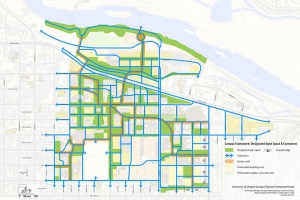
Refined Framework: University of Oregon Campus Physical Framework Vision; U of O Campus Planning, Design, & Construction; Robert Sabbatini AICP FASLA, PLACE, Perkins + Will, May 22, 2015
Building upon the traditions, policies, and patterns developed in the Oregon Experiment and embodied in the UO Campus Plan, the University of Oregon engaged nationally renowned campus planners, landscape architects, and architects to develop the UO Campus Physical Framework Vision. The project supplements and brings greater specificity to the Campus Plan by creating a comprehensive framework vision for the campus landscape, open spaces, and future building areas and uses. Using the existing landscape armature as a foundation, the project explores potential space needs and how future improvements can enhance the character of the campus landscape. Project consultants will describe how the project provides tools that better inform decision-making while preserving the campus’ beauty and functionality.
Sponsored by:
University of Oregon Campus Planning, Design, and Construction
UO School of Architecture and Allied Arts
Department of Landscape Architecture
Thursday, October 29 at 6:00pm, Pacific Hall, Room 123, 1025 University Street, Eugene, OR 97403
Frank Escher and Ravi Gunewardena: Art Space: Gallery and Exhibition Design Projects
In Los Angeles, a city with an extraordinary collection of 20th-century architecture and a globally important contemporary art scene, the office of Frank Escher and Ravi GuneWardena occupies a unique position. Since 1997, they have routinely worked with artists including Olafur Eliasson, Mike Kelley, Sharon Lockhart, and Stephen Prina, as well as with the restoration of significant buildings including John Lautner’s Chemosphere and, later, the Eames House in collaboration with the Getty Conservation Institute.
Wednesday, November 4 at 5:30pm, Lawrence Hall, Room 206, 1190 Franklin Boulevard, Eugene, OR AND
Thursday, November 5 at 5:30 pm, White Stag Block, Room 150, 70 NW Couch Street, Portland, OR 97209
For more information go to https://architecture.uoregon.edu/.
Lectures and Events in Seattle
Posted in Events, Lectures on April 28, 2015| Leave a Comment »
The University of Washington College of Built Environments will add Roland Terry and Grant Jones to its Roll of Honor in a celebration at UWs Architecture Hall on April 29th, 2015, at 6:00 pm.
The Roll of Honor was created in 1986, enabling the College to formally recognize extraordinary practitioners in the fields of architecture, construction management, landscape architecture, real estate and urban planning and design. The “Roll” was established then when the building underwent a remodeling; at that time eight names were listed. Additional names were added in the late 1990s, in 2002 and in 2008 for a total of fifteen.
Previous inductees include: Elizabeth Ayer, Fred Bassetti, Carl Gould, Lancelot Gowen, Richard Haag, Norman Johnston, Paul Kirk, Wendell Lovett, Lionel Pries, B. Marcus Priteca, Robert Reamer, Victor Steinbrueck, Ellsworth Storey, Paul Thiry and Myer Wolfe.
 If you missed Thaisa Way’s presentation on Richard Haag at our annual conference, here’s your chance to catch up with a book launch at Peter Miller Books, 2326 Second Avenue in Seattle, on May 1st from 6:00-8:00 pm. Richard Haag will be present to sign copies of the book and will also give a short talk midway through the evening.
If you missed Thaisa Way’s presentation on Richard Haag at our annual conference, here’s your chance to catch up with a book launch at Peter Miller Books, 2326 Second Avenue in Seattle, on May 1st from 6:00-8:00 pm. Richard Haag will be present to sign copies of the book and will also give a short talk midway through the evening.
The celebration of the UW Department of Architecture’s Centennial continues with a lecture by Jeffrey Karl Ochsner titled Back to the Future. The lecture will take place on May 6th, at 6:00 pm, in Architecture Hall 147.
Jeffrey Karl Ochsner FAIA is a Professor in the Department of Architecture at the University of Washington, where he has taught since 1988 in the areas of architectural design, urban design, historic preservation, and architectural history. He served as Chair of the Department of Architecture from 1996 to 2002. He holds adjunct positions in the Departments of Landscape Architecture and Urban Design & Planning. He began serving as Associate Dean for Academic Affairs for the College of Built Environments in July 2007.
Professor Ochsner is author of H. H. Richardson: Complete Architectural Works (1982), editor and co-author of Shaping Seattle Architecture: A Historical Guide to the Architects (First Edition, 1994; Second Edition, 2014), co-author of Distant Corner: Seattle Architects and the Legacy of H. H. Richardson (2003), and author of Lionel H. Pries, Architect-Artist-Educator: From Arts & Crafts to Modern Architecture (2007), and Furniture Studio: Materials, Craft, and Architecture (2012). The Publishers Association of the West awarded Lionel H. Pries, Architect-Artist-Educator two medals for design; the book was a finalist for the 2008 Washington State Book Award in History/Biography. Professor Ochsner has published in the Journal of the Society of Architectural Historians, JAE: Journal of Architectural Education, Pacific Northwest Quarterly, ARCADE and other journals. At the 2014 Annual Conference of the SAH/MDR he presented The Emergence of Northwest Regional Modernism: 1930s-1950s.
Seattle’s Miller Hull Partners will present On the Ground on May 20th at 6:00pm in Architecture Hall 147.
The Miller Hull Partnership’s design reputation is based on simple, innovative and authentic designs. Since its inception in 1977 the firm has pursued a rigorous logic in its design approach in the belief that architectural programs are best solved directly and efficiently. Throughout the firm’s history Miller Hull has received over 200 design awards and has been published in numerous national and foreign design journals. Miller Hull’s design philosophy centers around two essential architectural ideas. One is to use a building’s structure to create a significant place within a site, and the other is to be sensitive to climate and to respond to environmental demands with the form of the building. These ideas evolve from an appreciation of the extraordinary beauty of the natural environment and have allowed Miller Hull’s projects to have an unusually clear fit to their surrounding context. Founding partners David Miller and Robert Hull, both raised in Washington State, have explored the development of two dominant themes in America’s western regional architecture: the need to establish a defined place within the landscape and the art of rational building. Their attitude toward building in the landscape takes advantage of a mutual inflection in which architecture and landscape seem to need each other for completion. In their residential architecture they attempt to capture the spirit and vitality of the West by focusing on the tensions between nature and materiality; detail and structure.
The UW Architecture Department’s Lecture Series generally takes place at 6:00 pm in Architecture Hall 147 and are free and open to the public. Continuing education and IDP credits are available for attendance. For more information on future lectures see http://arch.be.washington.edu/.
Pietro Belluschi; a conversation with Anthony Belluschi and Judith Sheine
Posted in Announcements, Lectures on February 16, 2015| 1 Comment »
The Architecture and Legacy of Pietro Belluschi; A conversation with Anthony Belluschi and Judith Sheine
Wednesday, February 18, 5:30 p.m. Reception to follow
Jordan Schnitzer Museum of Art (JSMA) Lecture Hall, Eugene, OR
On April 15, Sheine and Anthony Belluschi will be joined by Randy Gragg, executive director of the Yeon Center in Portland, for a panel discussion at Central Lutheran Church, 1857 Potter Street in Eugene, beginning at 5:30 p.m. These conversations are free and open to the public. Portland-based architect Pietro Belluschi was one of the leading proponents of Modernist architecture in the Pacific Northwest. Join his son, architect Anthony Belluschi, and Judith Sheine, head of the Department of Architecture at the University of Oregon, for an evening of conversation about Belluschi and his legacy. The discussions are being held in conjunction with the JSMA exhibition The Architecture and Legacy of Pietro Belluschi, which was designed by Anthony Belluschi and his wife, Marti Mull Belluschi. The exhibition features models built by UO students of several Belluschi buildings in Oregon. The exhibit will run from February 7 through April 26. It is based on a similar show that premiered at the Oregon Historical Society in Portland in 2012.
Lecture on Lee Nelson at U of O
Posted in Lectures on February 24, 2014| Leave a Comment »
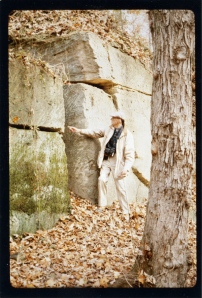
Lee Nelson in 1992 at Aquia Quarry, where sandstone used on the White House and the original section of the U.S. Capitol was quarried. Photograph by Chad Fisher; courtesy UO Libraries Special Collections.
On Wednesday, February 26, at 6:30 pm at the University of Oregon’s Knight Library Paulson Reading Room, Emily Vance will present Building a Legacy: The Lee Nelson Collection.
Ms. Vance, a Historic Preservation Program graduate student, recently completed an internship devoted to creating an annotated bibliography of the Lee Nelson papers which are housed in the UO Libraries Special Collections and University Archives. The internship was sponsored by the Historic Preservation Education Foundation (HPEF), a nonprofit educational organization dedicated to enhancing public awareness and understanding of historic buildings and sites and to encouraging their preservation. The educational mission of HPEF is very much in the spirit of Lee Nelson, who not only served as chief of the National Park Service’s (NPS) Technical Preservation services branch, but also was a cofounder of the Association for Preservation Technology. The 26 boxes of papers donated to the U of O, Nelson’s undergraduate alma mater, reveal the depth and breadth of his accomplishments and interests. Though he is perhaps best known for his restoration work on Independence Hall in Philadelphia, Nelson maintained strong ties to Oregon, publishing several studies on the state’s covered bridges. In the 1970s, Nelson waded into international waters, participating in the US Historic Preservation Team of the US-USSR Joint Working Group on the Enhancement of the Urban Environment. His visits to the Soviet Union as part of this endeavor formed the basis for his presentation, Historic Preservation in the Soviet Union, delivered at the 1976 annual meeting and conference of the SAH/MDR.
Links
- Annotated Bibliography of the Lee Nelson Papers at the Historic Preservation Education Foundation: http://hpef.us/special-projects/lee-nelson-papers
- More on Emily Vance’s Lee Nelson Project at the U of O Historic Preservation Program: http://hp.uoregon.edu/node/130
UW Winter Lecture Series
Posted in Lectures on January 30, 2014| Leave a Comment »
Erling Christoffersen | Copenhagen, Denmark
http://www.ec-design.dk/
Wednesday, 5 February 2014, 6:00 PM, Architecture Hall 147, University of Washington
Sponsored by Scan|Design
Material and Structure in Furniture
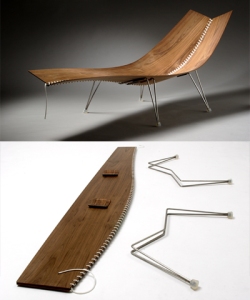 Throughout his career as a designer and teacher, Erling Christoffersen has explored furniture design through a process of experimentation with materials. Christoffersen’s recent work involves transforming flat materials such as wood veneers into furniture. His goal is to create functional furnishings where the two-dimensional starting point is still visible in the finished furniture. In shaping furniture through bending, the outline of the furniture is the result of the process.
Throughout his career as a designer and teacher, Erling Christoffersen has explored furniture design through a process of experimentation with materials. Christoffersen’s recent work involves transforming flat materials such as wood veneers into furniture. His goal is to create functional furnishings where the two-dimensional starting point is still visible in the finished furniture. In shaping furniture through bending, the outline of the furniture is the result of the process.
Since 1979 Erling Christoffersen has worked independently and within exhibition groups and studios. He established the studio Design 134 in 1989 with architects Bjørli Lundin and Flemming Steen Jensen. His work as a part of Design 134 includes exhibition design, interior design, furniture design, lamp design, and graphic design. In 2002 he re-established his own office and has been active in exhibiting furniture design in Denmark and abroad.
This quarter he is co-teaching Arch 504 Furniture Studio with Kimo Griggs.
Marco Casagrande
http://casagrandeworks.blogspot.com/
Friday, 7 February 2014, 7:30 PM, Architecture Hall 147, University of Washington
Presented by Space.City & the HSW Endowment/Neighborhood Design Studio
Rick Joy | Tuscon, AZ
http://www.rickjoy.com
Wednesday, 5 March 2014, 6:00 PM, Architecture Hall 147, University of Washington
Mahlum Endowed Lecture
Taking the Time
Rick Joy is Principal of Rick Joy Architects, a 12 person architecture and planning firm established in 1993 in Tucson, Arizona. From the beginning, each of RJA’s works have been exhibited and published extensively and have won numerous awards. Joy received the 2002 American Academy of Arts and Letters Award in Architecture and in 2004 won the prestigious National Design Award from the Smithsonian Institute/Cooper-Hewitt Museum. He periodically serves as a visiting professor at the Harvard Graduate School of Design, Rice and M.I.T. and he lectures extensively on the firm’s work throughout the world.
RJA has realized architectural works throughout North America with extensive experience with lifestyle based projects from numerous single family residences to an ultra-lux resort and large scale master-plans. The office has several active residential commissions in Miami, Sun Valley, Turks and Caicos, Venice Beach, Taos, Dallas, La Paz, Santiago Chile, and a 1.3 million square foot mixed-use development in Tucson. RJA was recently awarded the prestigious commission of the new Train Station and Campus Gateway to Princeton University and a new $150 million Aman Resort in upstate NY.
All lectures are free and open to the public.
Continuing education and IDP credits are available for attendance.
UW Fall Lecture Series
Posted in Lectures, tagged UW Lecture Series on September 23, 2013| Leave a Comment »
The leaves are starting to turn, the weather is going to pot, and the kids are headed back to school. Must be time for the University of Washington Department of Architecture Fall Lecture Series! Focusing on three decidedly contemporary practitioners of the art, the series will provide architectural historians with a jump on the future past. This year the first lecture coincides with the first day of classes and features Joseph G. Burns.
Joseph G. Burns talk, My Evolution as an Architect/Engineer will take place on Wednesday, September 25, 2013 at 6:00 pm in Architecture Hall 147 on the University of Washington Campus. A reception will be held following the lecture in Architecture Hall 250. The lecture and reception are both free and open to the public.
Joseph Burns is the 2013 Barry Onouye Endowed Chair in Architecture at the University Washington. Practicing as an architect/engineer with, he is the managing principal of the renowned structural engineering practice Thornton Tomasetti, with noted projects including the Chicago Spire with Santiago Calatrava. In particular, Joseph Burns specializes in the design of complex structural systems, including earthquake engineering and dynamic analysis. His credits span a wide spectrum of projects: education, aviation, sports, performing arts, retail, commercial buildings, hotels, residences, and museums and exhibits. He received a bachelor’s degree in architecture from the University of Notre Dame and master’s degrees in architecture and civil engineering from the Massachusetts Institute of Technology. More on Thornton Tomasetti.
For lecture #2, co-sponsored by NAC Architecture, John Ronan will present Encodings on October 23, 2013 at 6:00 pm. More on John Ronan’s practice can be found at his firm’s web page http://jrarch.com/ as well as a Harvard GSD Alumni Q&A. John Ronan is the Lead Designer and Founding Principal of John Ronan Architects in Chicago and a full professor in the College of Architecture at Illinois Institute of Technology (IIT). The firm’s work has been exhibited in New York and Chicago and has been published in many international design publications. Ronan has lectured throughout the United States. He received a Master of Architecture degree with distinction from the Harvard University Graduate School of Design in 1991 after completing a Bachelor of Science with honors from the University of Michigan. He established his practice in 1999. The firm’s work has been widely exhibited in New York and Chicago, including its entry into the Daniel Burnham Memorial Design Competition (Field Museum, 2009), and its inclusion in The Arts Institute of Chicago’s Young Chicago exhibition (2008). Its work has won numerous awards, including the 2012 AIA Institute National Honor Award for the Poetry Foundation in Chicago, the Green Good Design Award from the Chicago Athenaeum Museum of Architecture and Design for The Gary Comer Youth Center (2010), an AIA Interior Architecture Award for the Yale Steam Laundry, Washington D.C. (2009), and an AIA Distinguished Building Award for the Akiba-Schechter Jewish Day School in Chicago (2007).
Lecture #3 is NewWorkNewYork by Stella Betts. This will take place on October 30, 2013 at 6:00 pm. Based in New York City, Stella Betts is a partner in Leven Betts. For more, check out http://www.levenbetts.com/site.html.
All of the lectures take place in Architecture Hall 147, with the following receptions in Architecture 250. Continuing education and IDP credits are available for attendance. For updates on lectures and other events, check http://arch.be.washington.edu/.
Seattle’s Architectural History with Jeffrey Karl Ochsner
Posted in Lectures, News of Members on April 11, 2013| Leave a Comment »
Explore the development of Seattle’s architectural style during the city’s early growth. Important early architects, major stylistic directions and a range of building types will also be covered.
This lecture includes early 20th-century development in:
– downtown Seattle
– residential neighborhoods
– public and private institutions
– urban open spaces
April 20: Part 2, 1935 to present
Examine the origins and development of modern buildings’ architectural forms and styles.
This lecture includes:
– urban development and planning
– the works of notable architects and architectural firms in Seattle
Ochsner has taught at the University of Washington for over 24 years. He has written and edited five books, along with numerous articles, addressing Seattle’s architectural and urban history.





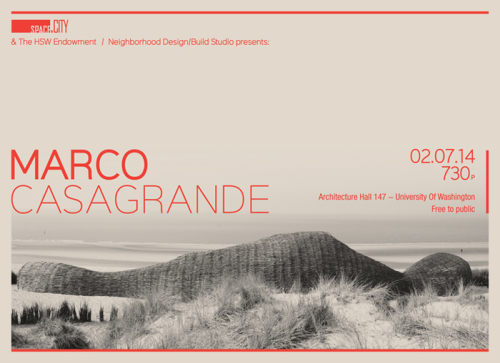
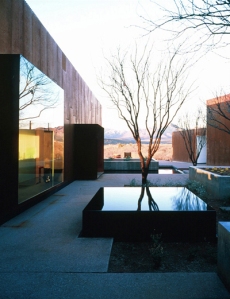
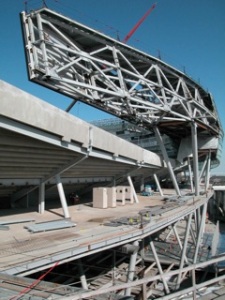
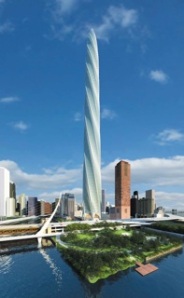
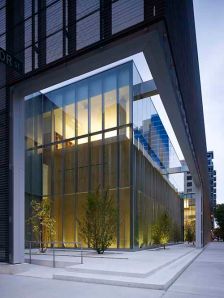
You must be logged in to post a comment.